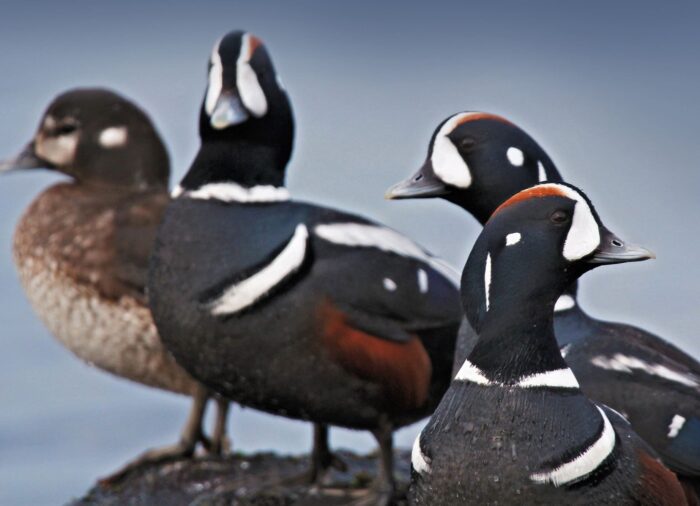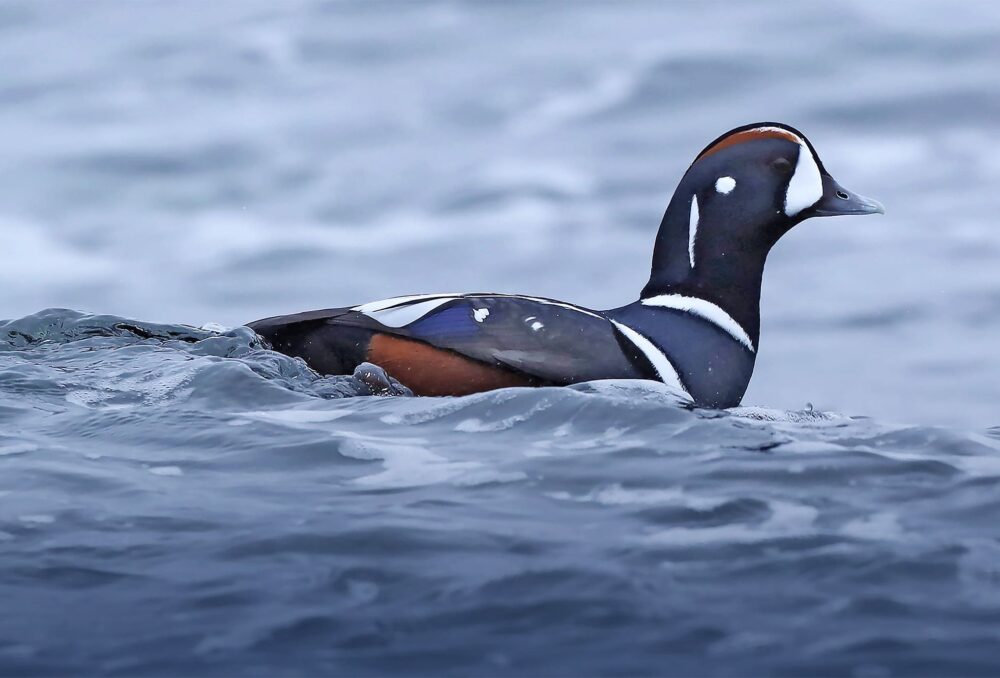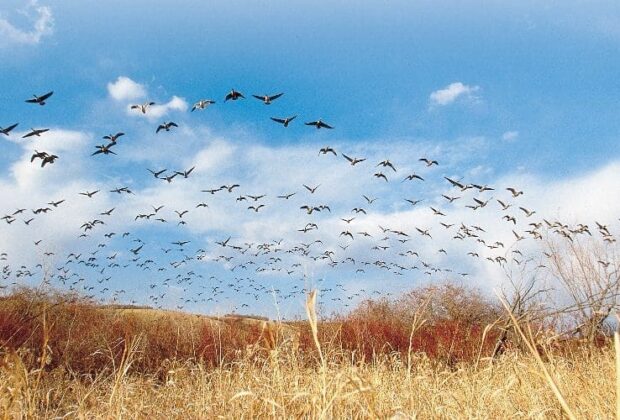It was a frosty February morning on the south shore of Vancouver Island, B.C. I’d arrived from Winnipeg a couple nights before, with the sole purpose of observing and photographing harlequin ducks on the wave-beaten rocks of the Pacific coast before they head north to breed.
This adventure was my first dedicated duck-photography trip. I look forward to ducks returning to the prairies each spring and it has become a life mission to photograph every duck species found in Canada.
The sun rose as I drove to Finlayson Point, a historic site in the city of Victoria with sweeping views of the Strait of Juan de Fuca. I climbed down a rocky footpath from the parking lot to the beach, walking with my eyes on the water, scanning for signs of life.
Within moments, I detected dark shapes and their movements, even from a distance, told me I’d found waterfowl. I raised my camera — a well-used but reliable Canon body with a Sigma 150-600 mm zoom lens — and my viewfinder revealed buffleheads, mergansers, common goldeneyes and more! My smile broadened as I snapped photos of the birds diving, dabbling and quacking at each other.
I kept walking, knowing the real prize — the harlequins —were likely about 1.5 kilometres ahead at the other end of the beach. As I drew near, a flock of dark waterfowl that I didn’t recognize flew overhead.
Were those the harlequins? Excited, I swung my camera upward to photograph them in flight. They turned out to be brants — another species on my bucket list, but not the one I came for. Still, a nice moment.
I followed the brants to their landing spot on the rocks at nearby Clover Point. Walking and snapping photos, I captured a harlequin in the frame of one of my brant shots! My heart skipped a beat and my pace quickened.
I approached the point cautiously, but I noticed another photographer already nestled in the rocks at the water’s edge. I resolved to return, even earlier, so that I could snag that sweet spot.

The next morning, I brought my monopod to hunker down for a good long sit. I settled on my driftwood seat and adjusted my camera settings for the weak morning light.
A group of harlequins swam up seemingly out of nowhere.
They were 20 feet from me, happily bathing and eating in the shallow rocky water, their little bodies shoved around by the waves. Harlequin ducks are stockier than many duck species — likely due to the rugged environment they evolved in. Duck autopsies show that harlequins sustain more bone fractures than other ducks throughout their lives, indicating that those waves and rocks are as rough as they look.
I could not get enough of the tough, little drakes’ stunning plumage. Their colouring and markings are unique, and it amazed me, with so many red and white dots and stripes on their dark-grey bodies, how perfectly they were camouflaged in the choppy ocean. I watched them eat crabs, and watched the drakes court the hens by head-bobbing and rushing toward them.
Then they quacked — or, I should say, squeaked.
I’ve learned that harlequins are fondly nicknamed “sea mice” because of the distinctive sounds they make. Hearing them for myself was delightful, and I managed to capture them on video. I stayed until my camera died and my heart was full.
I had spent the better part of a year anticipating this trip. I was afraid that it was silly to fly halfway across the country to photograph some birds. I’d really hoped to have such incredible success, but nature is unpredictable.
Here’s to more duck bucket-list pursuits for me, and more of whatever keeps you connected to what matters to you.
Harlequin ducks are stockier than many duck species - likely due to the rugged environment they evolved in. I could not get enough of the tough, little drakes' stunning plumage.

Saving habitats for harlequins and other sea-faring waterfowl
Sea ducks that frequent North America include eiders, scoters, mergansers, goldeneyes as well as buffleheads, long-tailed ducks and harlequin ducks. They are an important subsistence food for northern communities and are becoming more popular among hunters. Sea ducks are also among the most ornately coloured of waterfowl, making them a favourite among photographers and birdwatchers.
And although the 15 species of sea ducks constitute more than a third of the duck species breeding in North America, they are the most poorly understood group of waterfowl. Filling this knowledge gap was the impetus behind a new cross-border effort that’s putting sea duck conservation on the map — and shedding light on how we can help protect habitat for these birds.
The Sea Duck Key Habitat Sites Atlas was created by a team of conservation researchers from across North America. The atlas is an initiative of the Sea Duck Joint Venture, a partnership under the North American Waterfowl Management Plan. DUC research biologist Nic McLellan played a lead role in the creation of the atlas.
“By knowing which areas are most important to sea ducks, we can incorporate this knowledge into future conservation planning,” says McLellan. “It will also be very useful in helping to avoid environmental impacts and evaluate environmental assessments.”
The sea duck atlas identified 85 sites as providing critical habitat for these birds, many of which are in Canada. The majority of North American sea ducks breed in Canada and many stage or winter along our coasts, including the Great Lakes. We know that having healthy habitats is critical for population success. Today, coastal development, environmental risks such as oil spills and the impacts of climate change are posing significant threats to these habitats. DUC is actively working on many of these key landscapes to support sea duck populations through innovative science and on-the-ground conservation.
Know your waterfowl
Learn more about harlequin ducks and other waterfowl species, as well as tips on observation and identification.
Learn more



